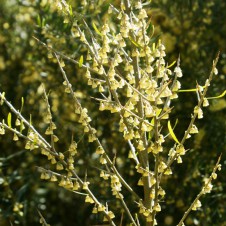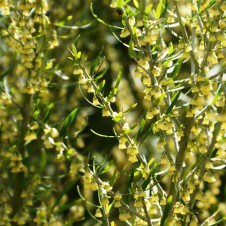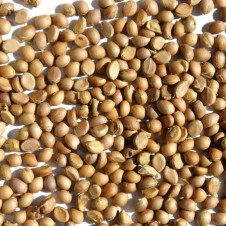General Description: A shrub, to 3 m tall, with narrow, dark green leaves and rows of small, fragrant, pale-yellow flowers.
Flowers and Fruit: Flowers are yellow, bell-shaped, to 4 mm long and are usually crowded on the branches, found from July to January. Fruit is round, about 4-5 mm wide, fleshy, white to purple in colour. This is a variable plant and our seed is from the more lush shrubs rather than the stunted specimens found on exposed sites.
Site Preference and Tolerances: Prefers streamside habitat and grows tallest on riverbanks and in moist gullies often among rocks and on stony rises and escarpments (steep valley sides). Often associated with basalt outcrops. Extremely hardy, able to survive in very dry and exposed sites. Adapted to stony ground and tolerant of alkaline soils. Frost resistant but new growth on young plants is sensitive. Suffers little attack from insects.
Life Span: Long-lived (80+ years)
Wildlife Value: The thorny branches provide refuge and nesting sites for small birds. The berries also attract birds which in turn spread the seed. It also provides excellent habitat for possums and food for reptiles.
Other Values and Uses: It is highly palatable to stock and has potential as emergency fodder during drought. May be used as a barrier to stock in the long term as when grazed it becomes more twiggy and thorny and more dense. When not grazed this is a shapely shrub with interesting foliage and intensely fragrant flowers which makes a good hedge. Is useful for erosion control, particularly in stabilising rocky sites. Historical records suggest that the very dense timber was used in print block making in the 1800’s.
Other Scientific Names: Hymenanthera angustifolia, Hymenanthera dentata, Hymenanthera dentata s.l., Hymenanthera dentata var. angustifolia, Melicytus dentatus s.l.
Germination Information: Flesh has been removed so can sow seed, germination will take from 3 to 5 months in a shaded open area.



